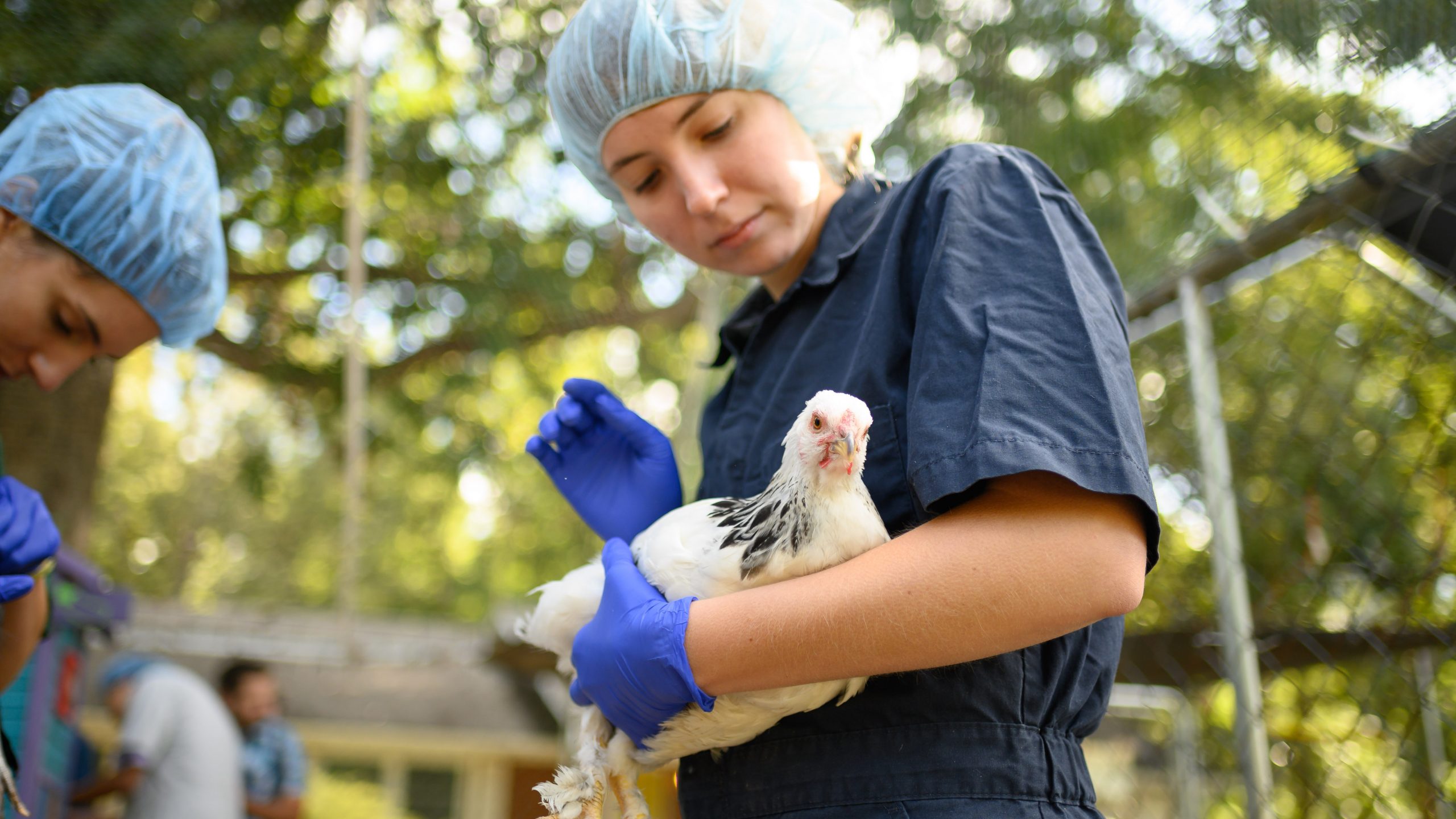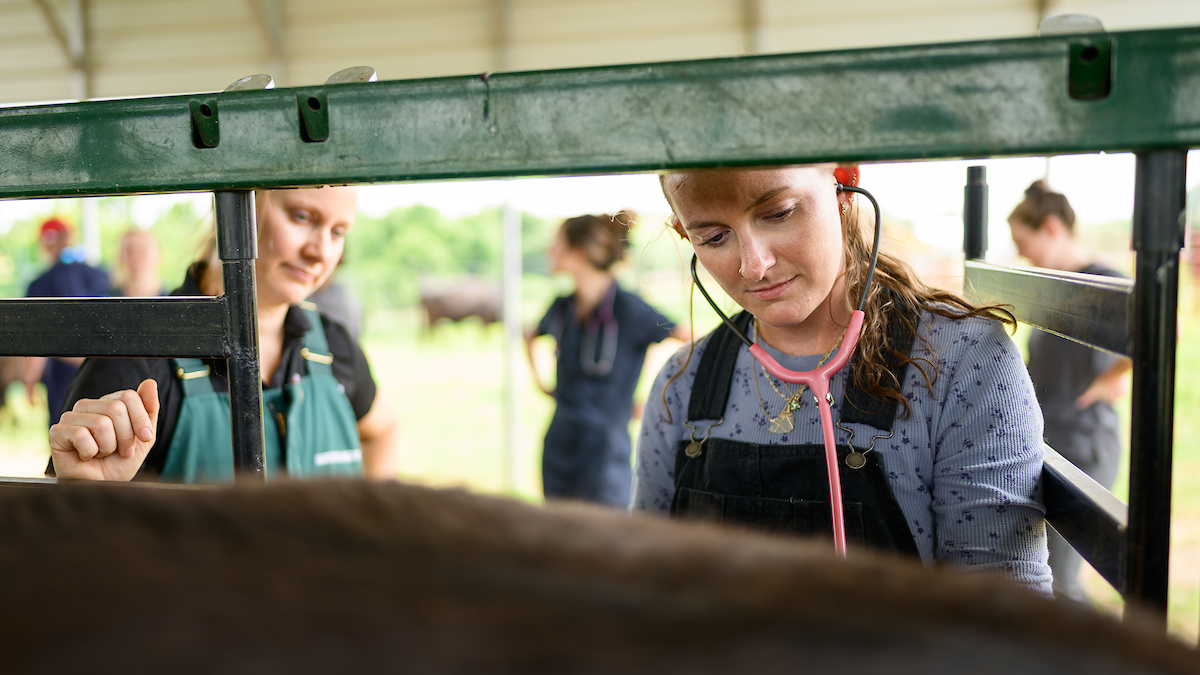NC State Veterinary Medicine Research Roundup, November 2021

A look at some of the latest published studies from the CVM.
Canine Mitral Valve Disease
A comprehensive study of 134 dogs with myxomatous mitral valve disease (MMVD) sheds new light on the condition’s features and clinical signs.
The study reviewed cases of MMVD in Yorkshire terriers and miniature schnauzers seen between 2007 and 2016. The prevalence of MMVD was significantly higher in the schnauzers, and dogs with the condition were also significantly younger when diagnosed.
Schnauzers were also significantly more likely to have mitral valve prolapse and syncope, while Yorkshire terriers were far more likely to have coughing and previous or current treatment with cardiac medications.
The study’s authors include Kathryn Meurs, Clarke Atkins, Sandra Tou, Bruce Keene, Teresa DeFrancesco, Kerry O’Donnell, Dylan DeProspero and former NC State clinician Darcy Adin. The Journal of the American Veterinary Medical Association published the research.
Read the study here.
Vaccination and Antimicrobial Resistance Control
The first study to show the broader economic value of the pneumococcal conjugate vaccine (PVC) in hindering the development of antimicrobial resistance shows that the vaccination slowed the growth of bacteria resistant to amoxicillin by nearly 15% in Ethiopia.
The study’s authors, including Andy Stringer, developed an agent-based model, called DREAMR, to evaluate the economic value of childhood PCV immunization and applied it to the African country, noting that more than 100,000 antibiotic treatment failures were averted there between 20111 and 2017. The findings also indicate that increasing PCV immunization coverage may provide millions in annual AMR cost savings.
The research appears in Vaccine.
Read the study here.
Chicken Allergens in Dogs

Research led by Thierry Olivry identifies seven major chicken allergens for dogs, many of which are cross-reactive allergens for humans.
Allergens targeted by serum-specific immunoglobulin E (sigE) in dogs clinically allergic to chicken had not been previously reported. The study notes that the allergens exhibit the potential to be cross-reactive between poultry and mammalian meats, with six of them known to be cross-reactive between chicken and fish.
Veterinary Dermatology published the research.
Read the study here.
Manatee Rehabilitation Approaches
The pharmacokinetic behavior of the antibiotic tulathromycin in Florida manatees can be used to optimize dosage regimens in the species, according to research co-authored by Ronald Baynes, James Yeatts, Emma Nixon and Claire Bublitz.
Florida manatees frequently enter rehabilitation care facilities for conditions such as cold stress syndrome or boat trike trauma, and antimicrobials to treat respiratory disease are often needed. The Journal of Zoo and Wildlife Medicine published the research.
Read the study here.
Canine Housing Environments and Medicine Absorption
The type of housing environment for dogs does not significantly impact the oral absorption and gastric emptying of acetaminophen, according to a study authored by Mark Papich, Kristen Messenger, Hiroko Enomoto and Melanie Madsen.
The study compared findings taken from healthy beagles in a normal housing environment to a cage in an unfamiliar environment. The American Journal of Veterinary Research published the research.
Read the study here.

Treating Intestinal Ischemia
New research provides evidence that HOPX, a type of protein-coding gene, controls the activity state of intestinal epithelial stem cells and may be a critical signaling pathway during stem cell-mediated repair following intestinal ischemia, the loss of blood flow to the small intestine.
The study also supports findings that reserve intestinal epithelial stem cells (rISCs)are resistant to ischemic injury and are likely an important source of cellular renewal following near-complete epithelial loss.
Intestinal ischemia is life-threatening, with mortality rates ranging from 50% to 80% because of epithelial cell death. Survival greatly depends on epithelial repair. The study’s authors include Liara Gonzalez, James Robertson, Sara Tufts, John Freund, Jennifer Luff, Cecilia Schaaf and Amy Stewart.
The American Journal of Physiology-Gastrointestinal and Liver Physiology published the research.
Read the study here.
Rabbits and Cardiovascular Disease
A comprehensive study of medical records of rabbits over a 17 period characterizes the epidemiological features of cardiovascular disease in the species.
The findings, published in the Journal of the American Veterinary Medical Association and co-authored by Sarah Ozawa, outline the prevalence and survival times of rabbits with the disease, noting that the median survival time was lower than that reported for other species. Right-sided, left-sided and biventricular congestive heart failure occurred equally.
Read the study here.
~Jordan Bartel/NC State Veterinary Medicine


